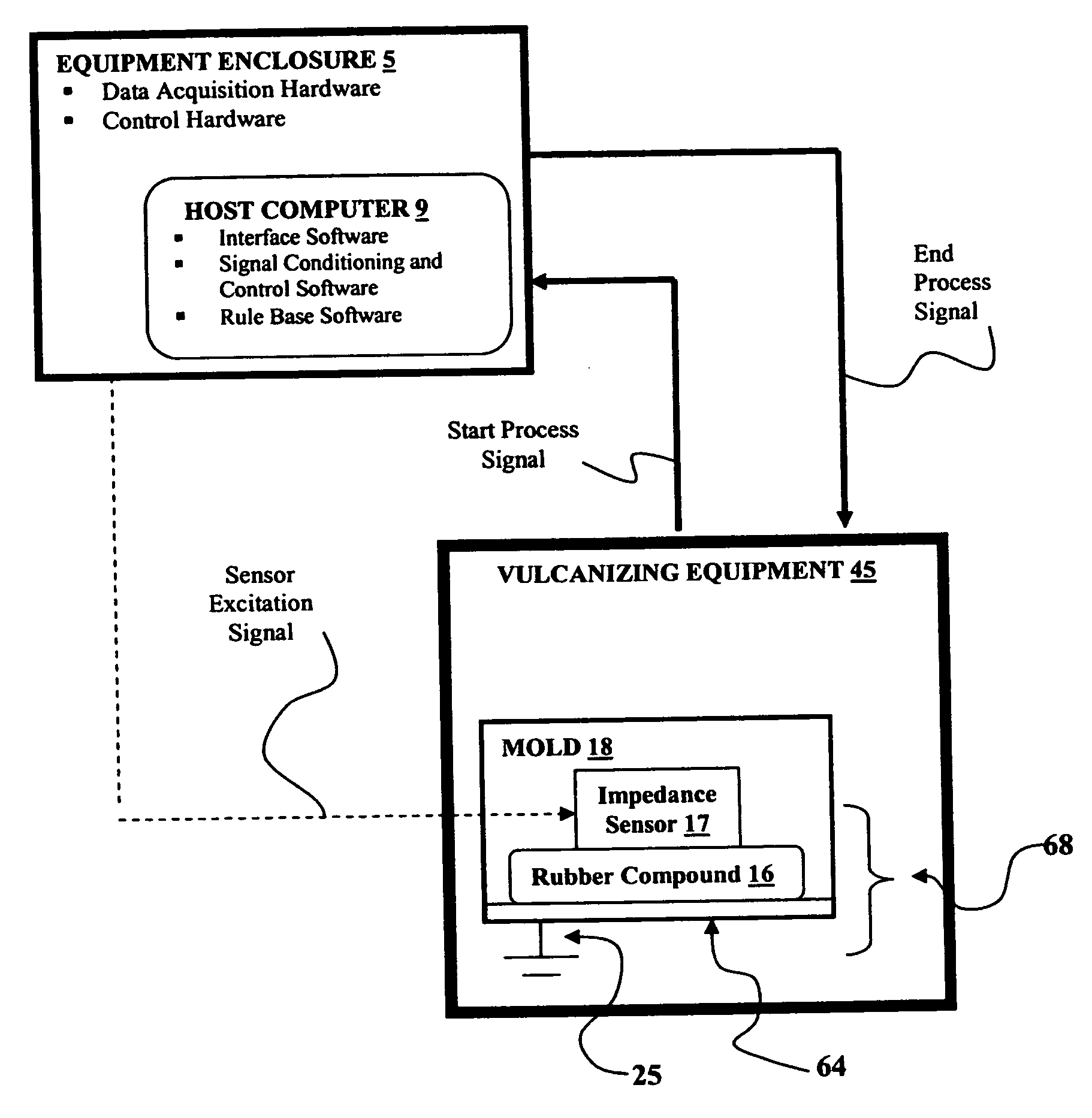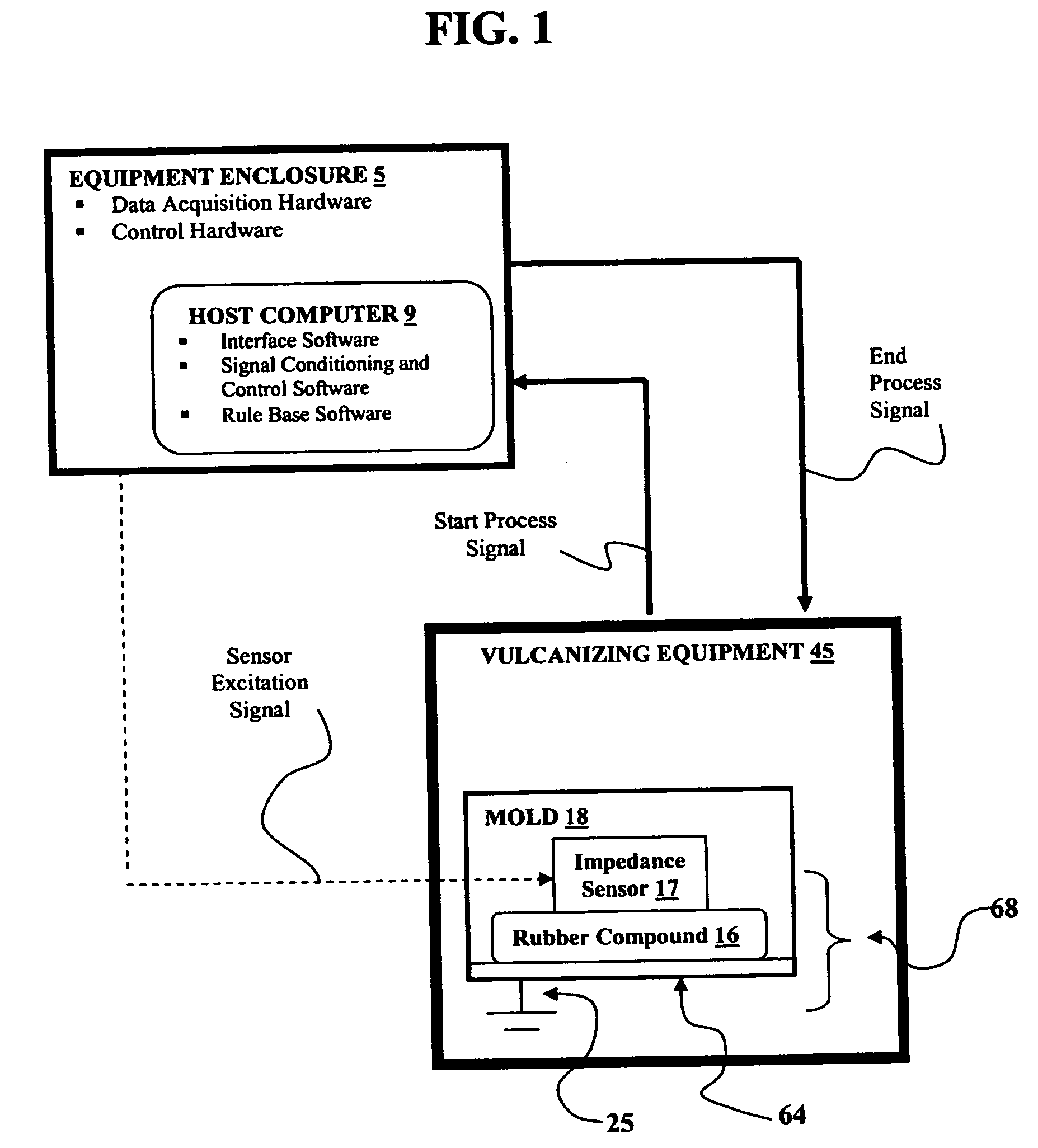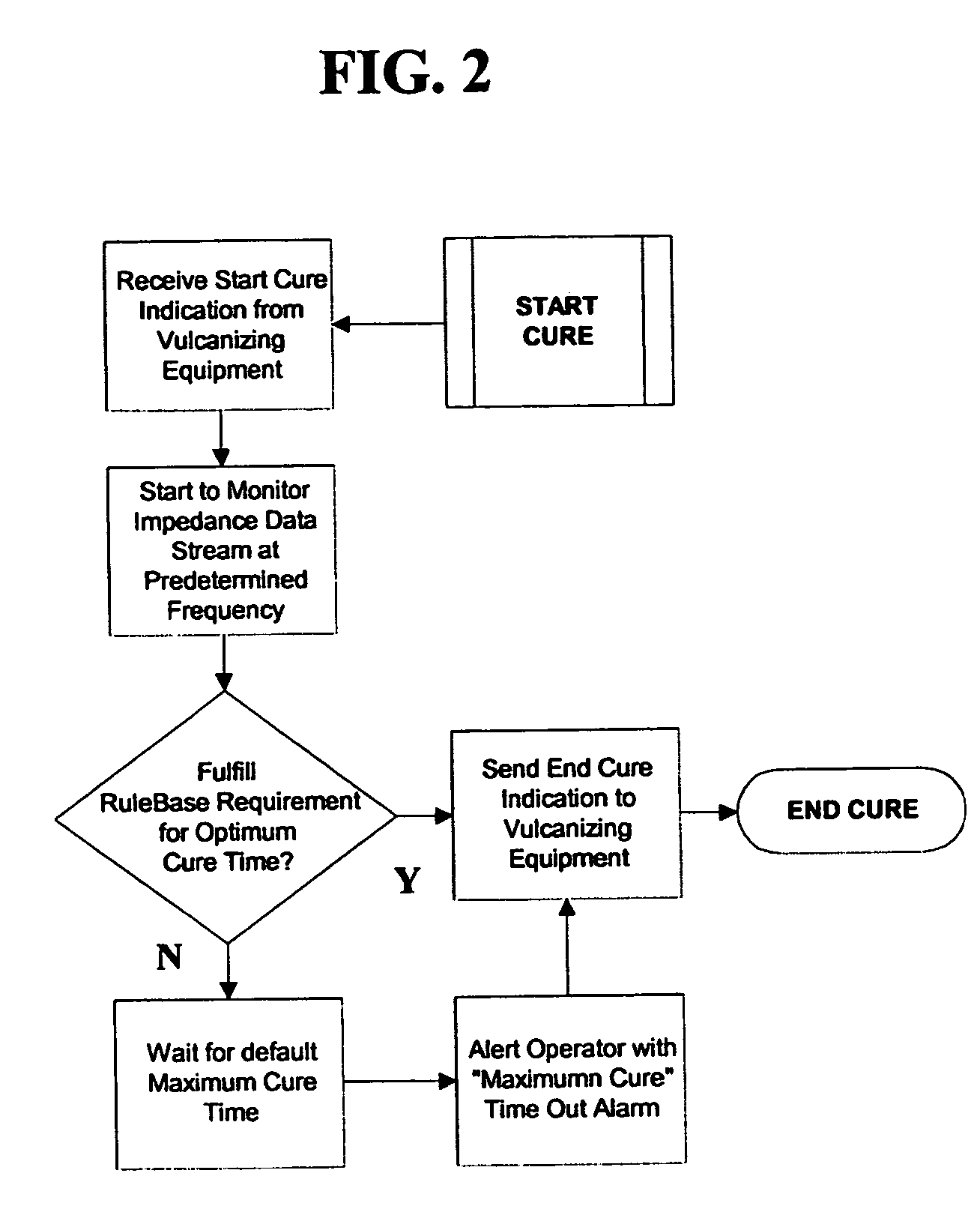Process and apparatus for improving and controlling the vulcanization of natural and synthetic rubber compounds
- Summary
- Abstract
- Description
- Claims
- Application Information
AI Technical Summary
Benefits of technology
Problems solved by technology
Method used
Image
Examples
example
Natural Rubber Cure Process
[0202]FIG. 15 shows a plot of typical impedance data streams obtained during a cure of natural rubber. Two types of time dependent data are obtained. The types of data are plotted in this figure as: (1) reactance data plots (having vertical axis measurements identified by the “X” column immediately to the left of the plots shown), and (2) resistance data plots (having mega-ohm values for the vertical axis, these values are identified by the column between the “X” and the sideways “R”).
[0203] For a single rubber sample being cured according to the present invention, eight separate oscillation frequencies are input to the capacitor 68 (having the rubber sample as the rubber compound 16), and resulting reactance and resistance values are obtained for each such oscillation frequency. In particular, the oscillation frequencies may be multiplexed into the capacitor 68 having the curing rubber compound 16 at a sufficiently fast rate so that the cure state does ...
PUM
| Property | Measurement | Unit |
|---|---|---|
| Temperature | aaaaa | aaaaa |
| Time | aaaaa | aaaaa |
| Frequency | aaaaa | aaaaa |
Abstract
Description
Claims
Application Information
 Login to View More
Login to View More - R&D
- Intellectual Property
- Life Sciences
- Materials
- Tech Scout
- Unparalleled Data Quality
- Higher Quality Content
- 60% Fewer Hallucinations
Browse by: Latest US Patents, China's latest patents, Technical Efficacy Thesaurus, Application Domain, Technology Topic, Popular Technical Reports.
© 2025 PatSnap. All rights reserved.Legal|Privacy policy|Modern Slavery Act Transparency Statement|Sitemap|About US| Contact US: help@patsnap.com



